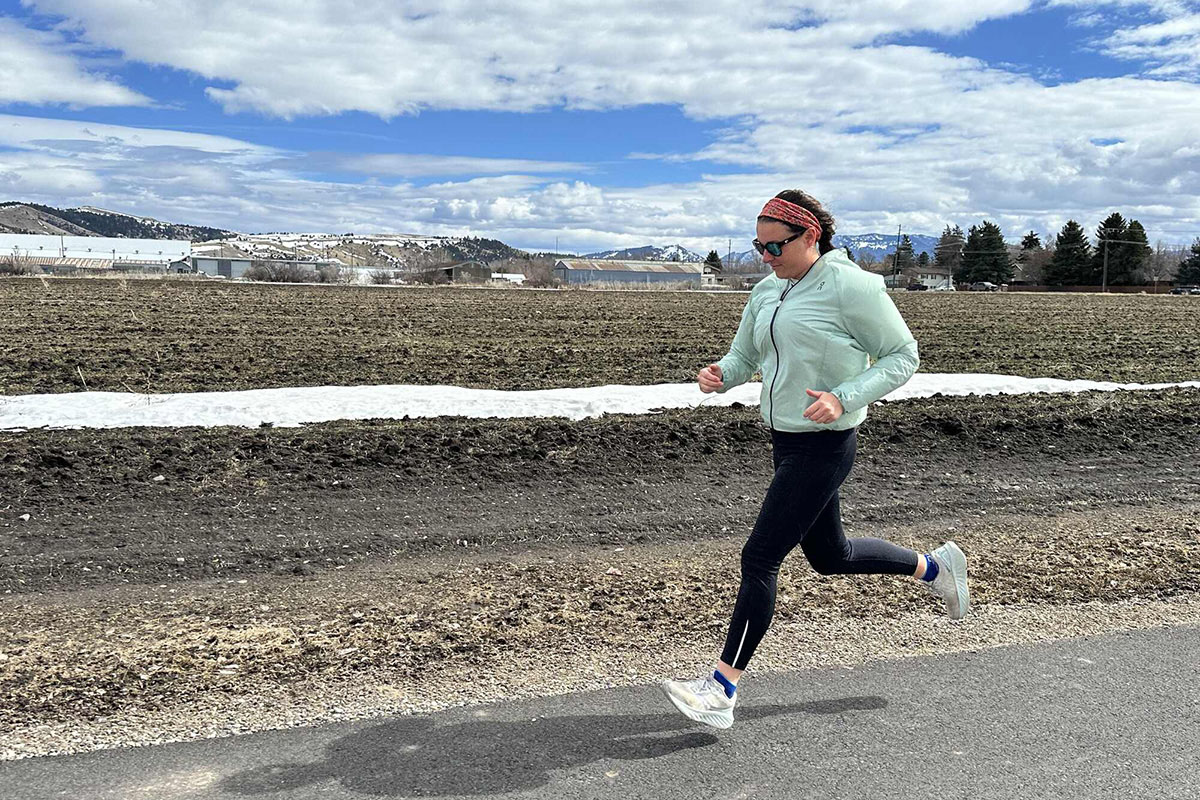
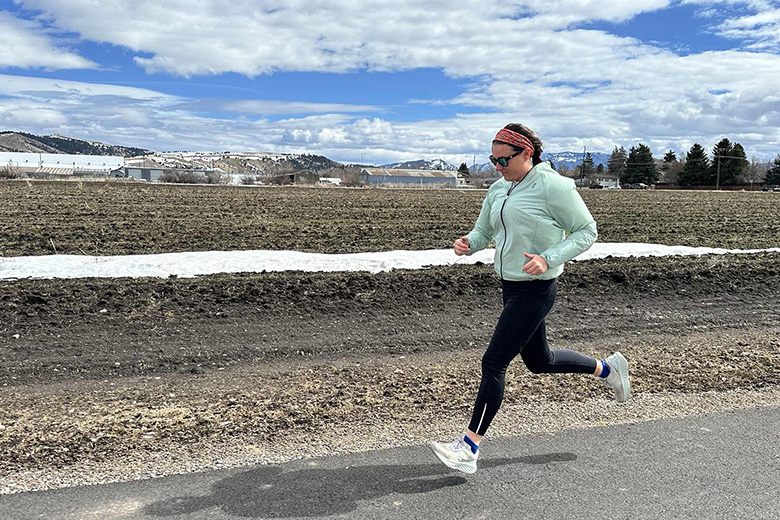
Switchback Travel (Matt Maar)


Switchback Travel (Matt Maar)
Price: $160
Weight: 1 lb. 1.6 oz (women’s size 8)
Cushioning: Maximum
Drop: 10mm
What we like: A full-cushion road shoe with excellent comfort and energy return; recently updated with more room at the forefoot.
What we don’t: Outsole isn't super versatile on variable terrain; upper gets dirty easily.
See the Women's Saucony Triumph 22 See the Men's Saucony Triumph 22
I've been an on-and-off road runner since college and have gotten back into it over the past few years. I love a good trail run as much as the next mountain townie, but something about leaving my front door for a run (and skipping the drive to a trailhead) is appealing. Despite a job that requires me to test dozens of shoes each year, the pair I reach for over and over is the Saucony Triumph 22. I put several hundred miles on these kicks this past season and even sent a pair back to New Hampshire for when I visit my family—they're that good. With a springy midsole that rebounds quickly without sacrificing cushioning and an airy, breathable upper that flexes and has plenty of room for my toes, I have had a fantastic experience with these shoes. Below is my review of the Saucony Triumph 22. To see how it stacks up to the competition, check out our article on the best running shoes.
While traction is one of my biggest priorities in a trail running shoe, energy return is the first thing I think about with my road running shoes. And this is where the Saucony Triumph 22 really stands out. This is a well-padded shoe in the maximum cushioning category, with 37 millimeters under the heel and 27 under the toe. Sometimes, I've found maximalist shoes to feel sluggish, but that's not the case here, which is in part thanks to the 10-millimeter drop that encourages a fluid stride. The balance of comfort and energy return is phenomenal, and the Triumph effectively minimizes fatigue on longer runs without compromising on spring and responsiveness for shorter, faster outings.
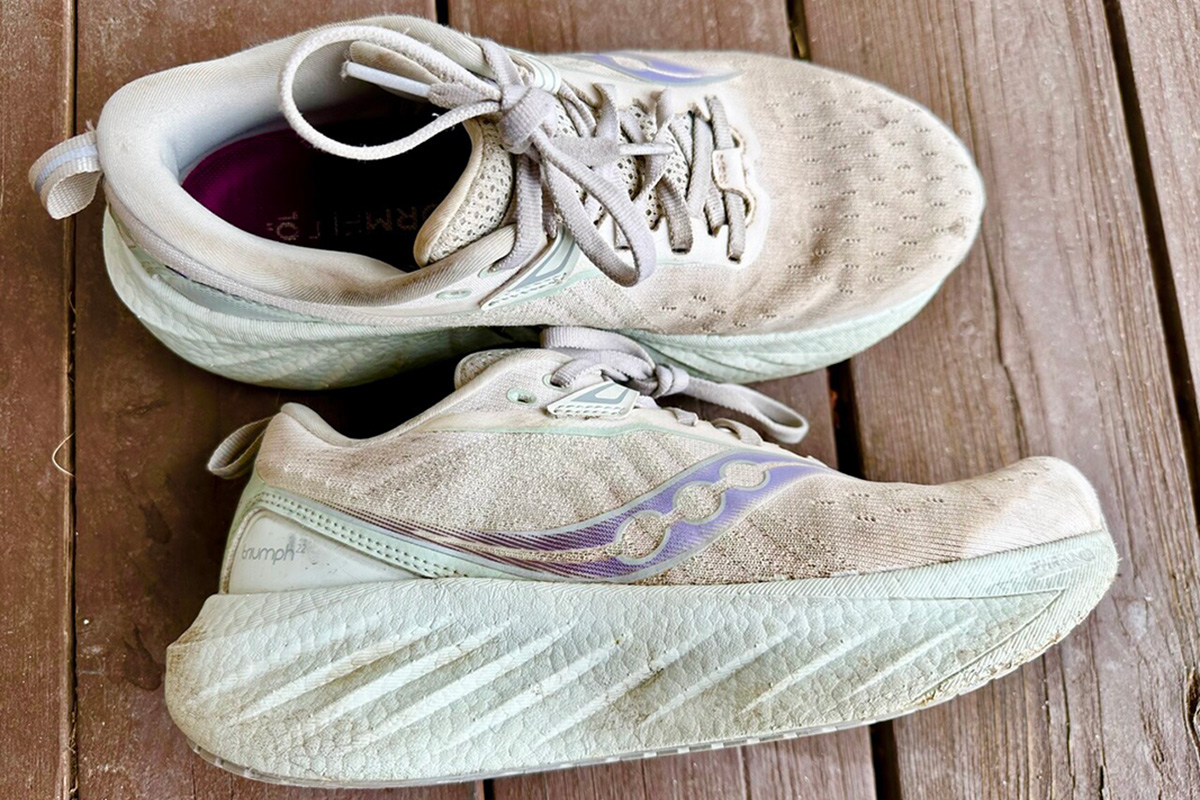
The Triumph's midsole is made with Saucony's PWRRUN PB technology, a composite made from PEBA (polyether block amide) foam that's known for its lightweight, springy feel and often found in race-oriented shoes. It's also designed to maintain responsiveness in shifting temperatures, getting neither stiff nor sluggish on extreme ends of the spectrum. Shoes made with PEBA rather than more traditional EVA are often a bit pricier, although the $160 Triumph falls about mid-pack among non-waterproof running shoes. Despite being made with a similar midsole compound, the Saucony Tempus 2 I tested this year is stiffer but not as responsive. In other words, while the foam material matters, so do factors like stack height, drop, and overall construction.
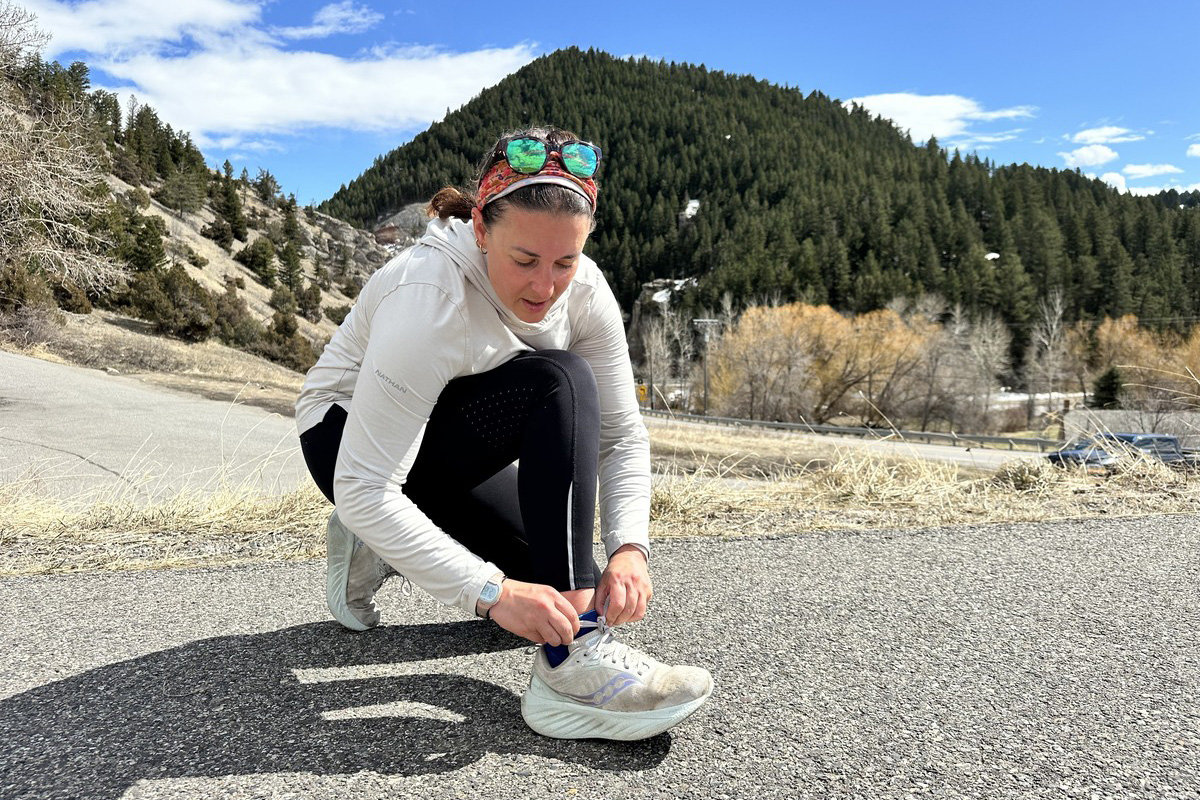
The Triumph 22 has a strong, secure platform that encourages good alignment and takes corners well. Saucony slightly widened the platform under the midfoot with the latest version, which contributes to the solid foot plant. To be clear, this isn't a dedicated stability shoe, so you'll feel some compression when cornering, but the Triumph has an even midsole depth that feels secure on pavement as well as rutted gravel. I had some issues with an odd instep drop this year in a few other pairs of shoes, but I didn't experience any ankle-rolling tendencies in the Saucony.
However, the shoes' tall stack height may give some runners pause. At 37 millimeters under the heel and 27 under the forefoot, the Triumph is tall even by maximum-cushioning standards, which can take some getting used to. The 10-millimeter heel-to-toe drop does balance things out, as the forefoot is positioned much closer to the ground, but I recommend running on even terrain your first few times—especially if you're coming from a shoe with low to moderate cushioning. If you're used to even taller shoes like the Hoka Bondi 9 (40.5mm at the heel and 35.5mm under the forefoot) or the Asics Novablast 5 (40.5mm heel/32.5mm forefoot), you'll likely be fine.

I'd categorize the Triumph 22 as above average in padding for a road shoe. The 37-millimeter stack height under the heel provides soft cushioning that helps reduce fatigue and ground pounding on longer runs, and I can wear the shoes all day after finishing a run and never feel desperate to rip them off. Unlike a trail running shoe, where I look for protection and cushioning from rocks and roots, my road shoe padding matters more for duration and stride fatigue. I never want the bottoms of my feet to feel sore from repetitive motion, and the PWRRUN PB midsole paired with the foot-hugging OrthoLite liner is a highly cushioned, protective combination.
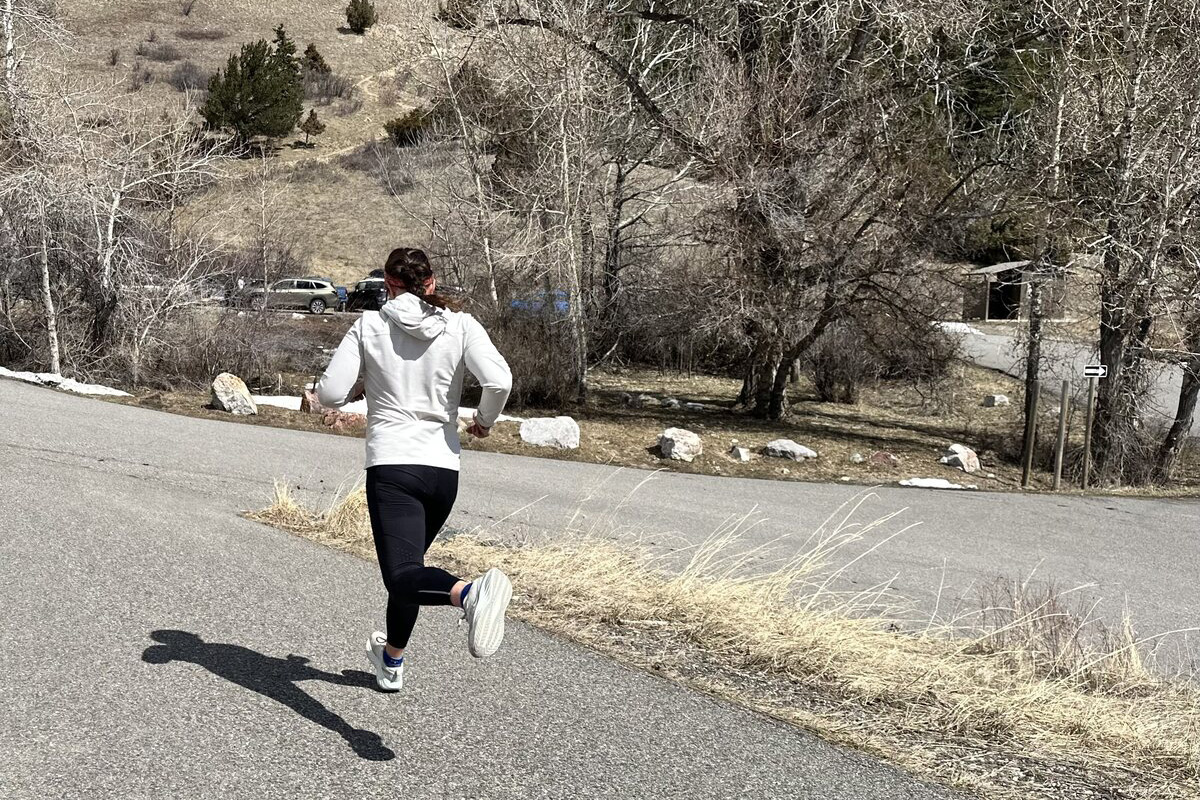
I've had mixed experiences with Saucony shoes over the years—some of their designs feel constricting out of the box (the Ride and Peregrine in particular), though they stretch to size after a few wears. The forefoot is usually where I feel this tightness, but the Triumph has a wider forefoot and a softer upper material that lends a nice fit throughout the entire foot. The shoe has moderate achilles support at the heel counter, and the upper is a supple and stretchy knit mesh that flexes nicely and breathes well on hot days. I've mostly worn the Triumph 22 in a dry Montana climate, so I can't speak to its performance in humidity, but I've never experienced any overheating. For reference, I took the shoes out of the box and directly onto a trip with a lot of walking and running and came away with zero hotspots or other friction-related issues. The padded collar provides some protection for my ankle bone without pinching, and the tongue stays securely in place.
Because the fit of these shoes is more generous than other Saucony models, I recommend going with your normal size. In my experience, they feel more similar to the Hurricane than the Peregrine, but if you're new to Saucony, the best bet is to try the shoes on since there's a healthy range between styles. The Triumph's low weight also contributes to comfort: At just 1 pound 1.6 ounces for the pair, they're among the lightest max-cushioned shoes on the market, and the overlay-free knit upper gives them a very airy, barely-there feel.
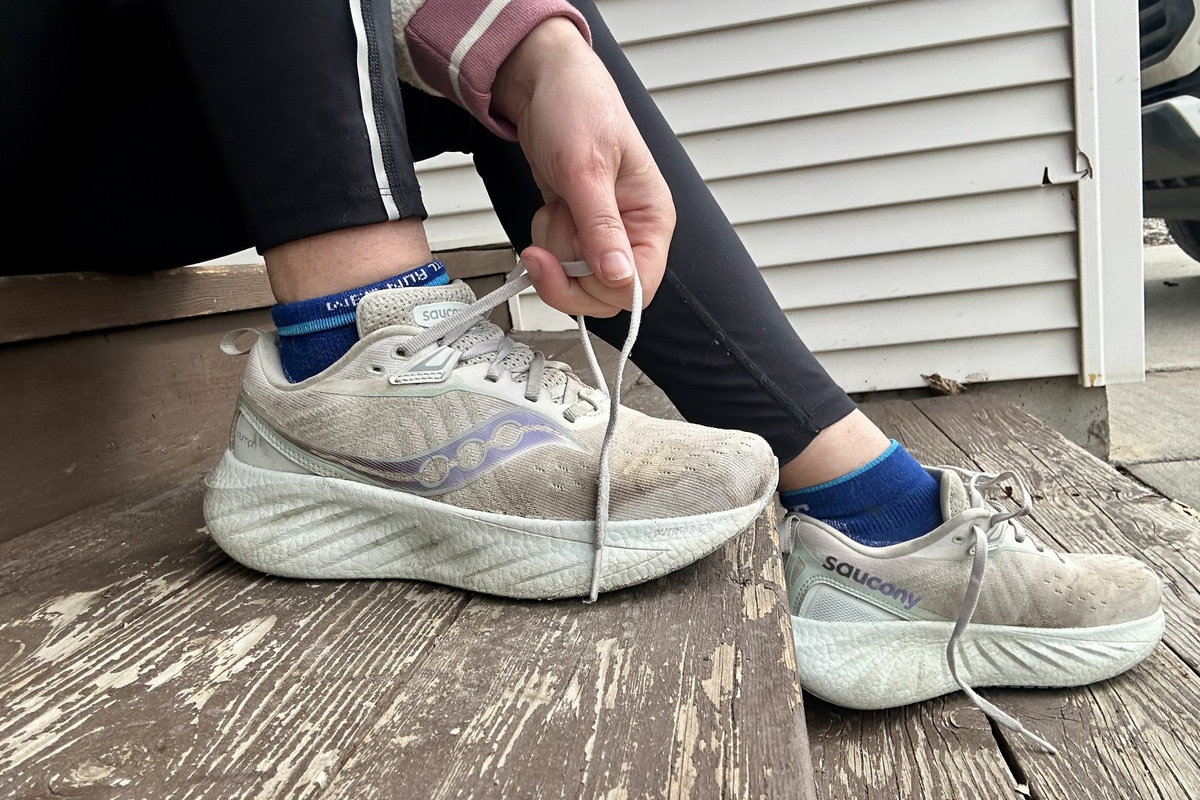
The Triumph 22 is a road running shoe, though I've taken it onto in-town gravel and flat dirt without many issues. The rubber outsole bites well into even surfaces and feels secure when turning quickly, although it doesn't feature true lugs—instead, you get foot-mapped patterning with cutouts running vertically from front to back. This helps keep weight low but detracts from overall versatility, making the Triumph a less-than-ideal choice if you expect to encounter a lot of different surfaces on your runs. For a similar combination of comfort and cushioning with slightly better traction, I prefer the Brooks Cascadia 18 (a dedicated trail runner), which features 4.5-millimeter-deep lugs that have proven capable over a range of surfaces. But for those who stick to pavement, the Triumph is perfectly serviceable.
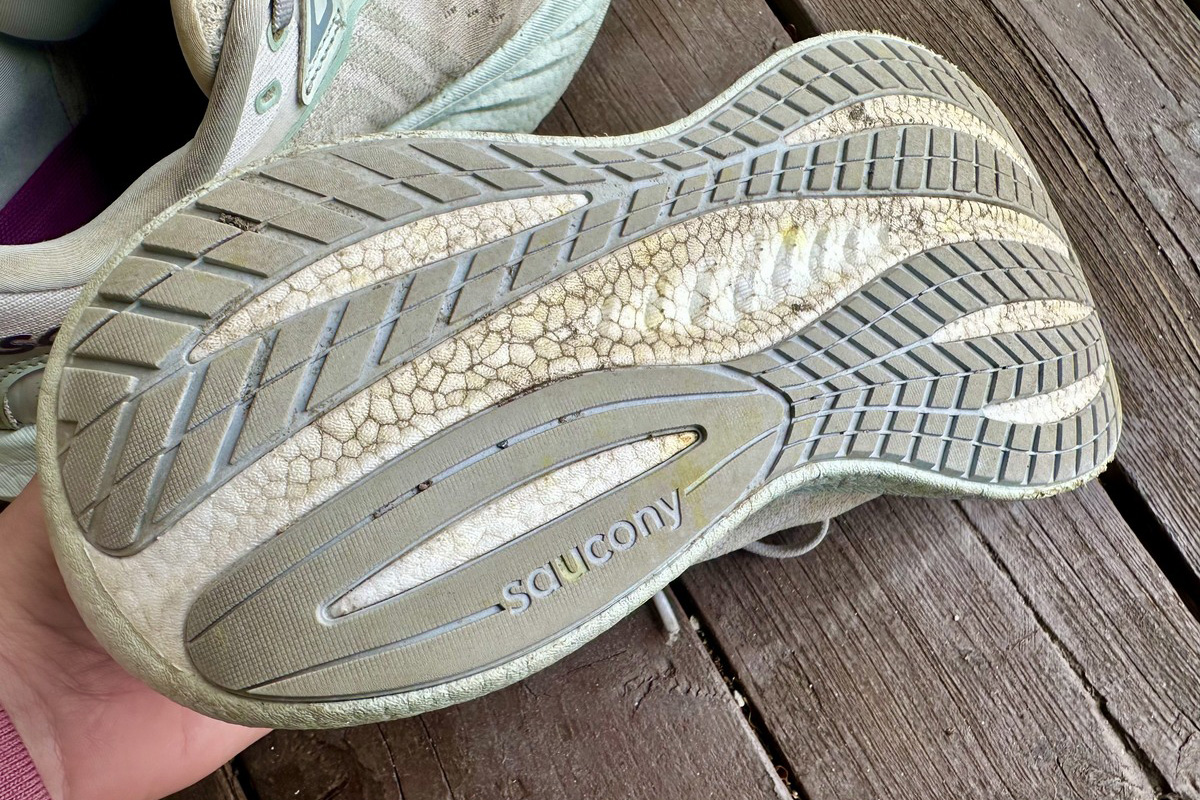
I test a lot of running shoes, so it can be hard to get a good durability read on any particular pair. I have, however, worn the Triumph more than any other shoe over the past two seasons, and they've held up very well, from the upper to the outsole. Granted, a road running shoe isn't going to suffer the tread wear of a deeply lugged trail runner, but there hasn't been any excessive rubber peeling, midsole compression, or wear and tear along the upper. And the latest Triumph 22 did get a boost in upper durability from the past-generation 21, with a slightly thicker material that adds a negligible amount of weight while boosting abrasion resistance.
My only gripe is that the shoes grow dirty very quickly. I attribute much of this to the soft knit upper, but the lighter colorway that I tested certainly didn't help (opting for a darker design will likely mask stains better). This certainly isn't a dealbreaker, but the material doesn't wipe clean like polyester and other synthetic materials, and the lack of overlays means the Triumph isn't great at repelling dirt. Even though I've worn the shoes primarily on road runs and rarely hit mud, they looked filthy beyond redemption after just a few dusty runs and one rainy outing.
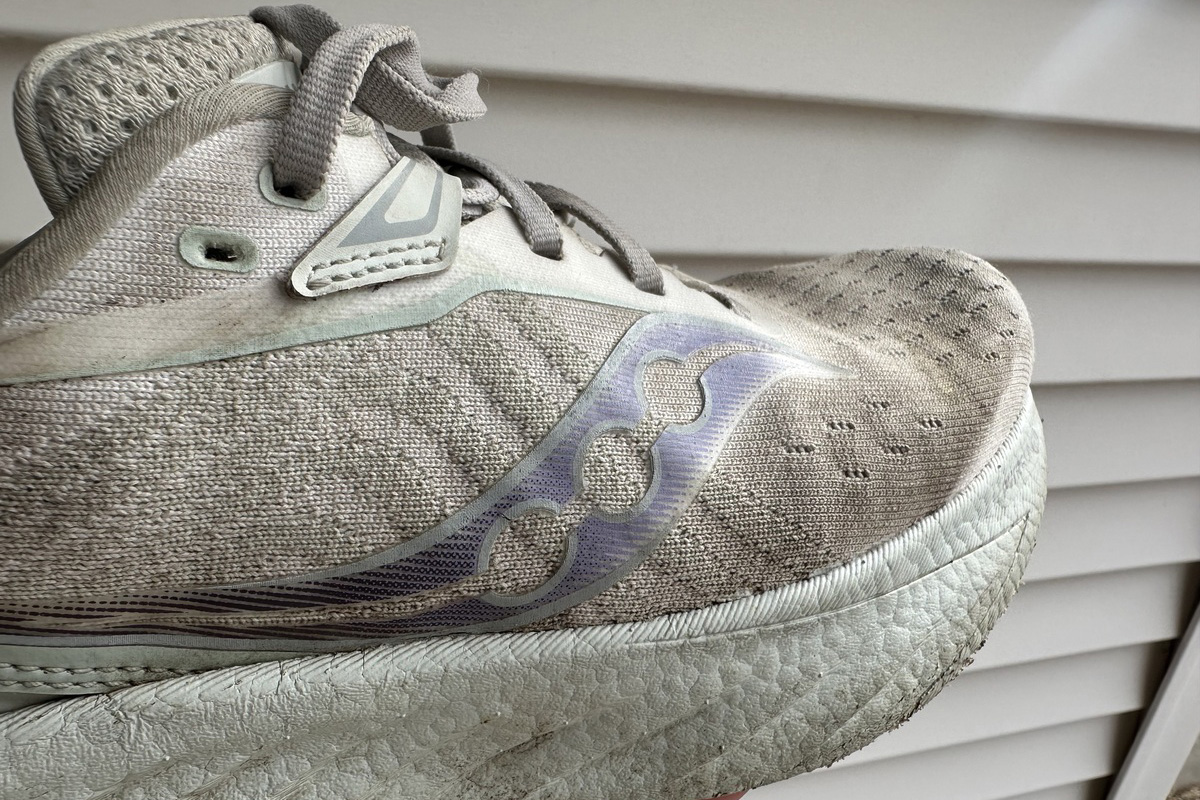
My review above covers the women’s Saucony Triumph 22, and it’s also sold in a men’s version for the same price. In comparing the two, the men’s Triumph 22 is a little heavier at 1 pound 4.2 ounces for the pair (2.6 oz. heavier than the women's), comes in different colorways, and is available in sizes from 7 to 15 (the women's shoe comes in sizes from 5 to 12). Saucony also offers the women's Triumph 22 in a Gore-Tex version for $180 (the men's is strangely not offered in a waterproof model), and both the men's and women's styles are available in dedicated wide sizes for those with high-volume feet.
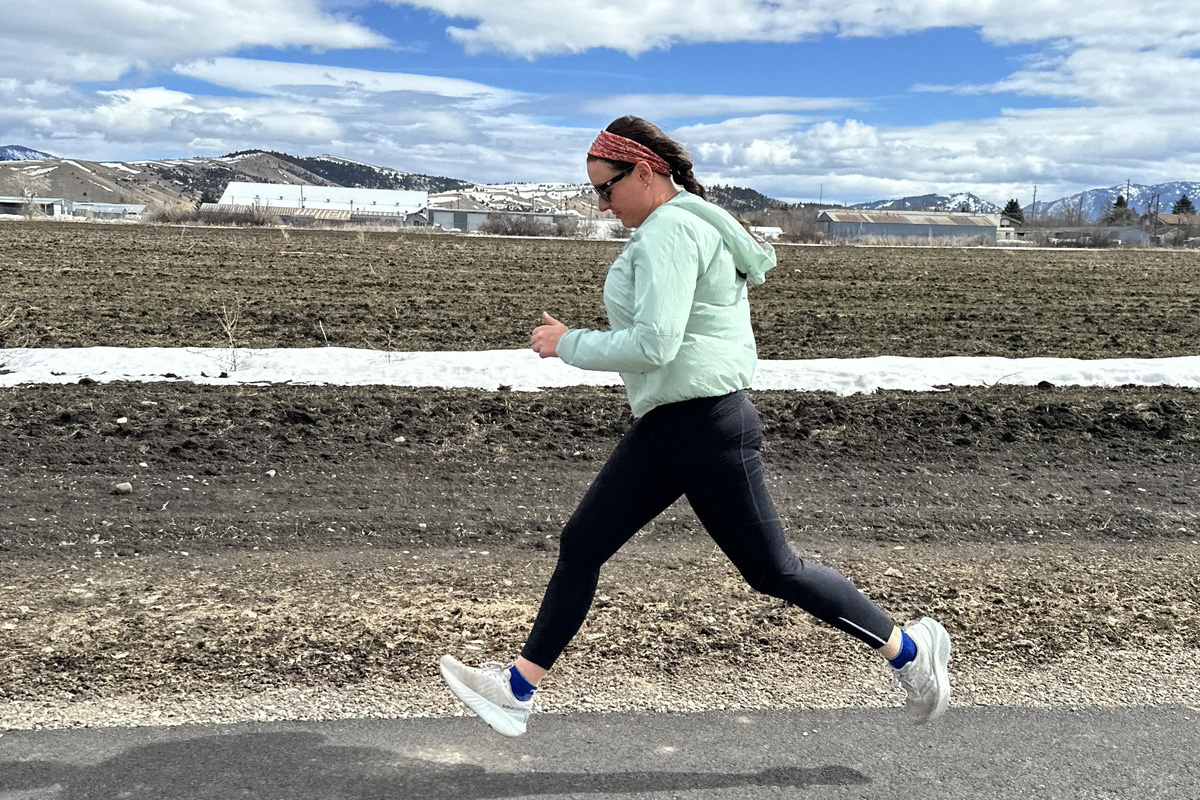
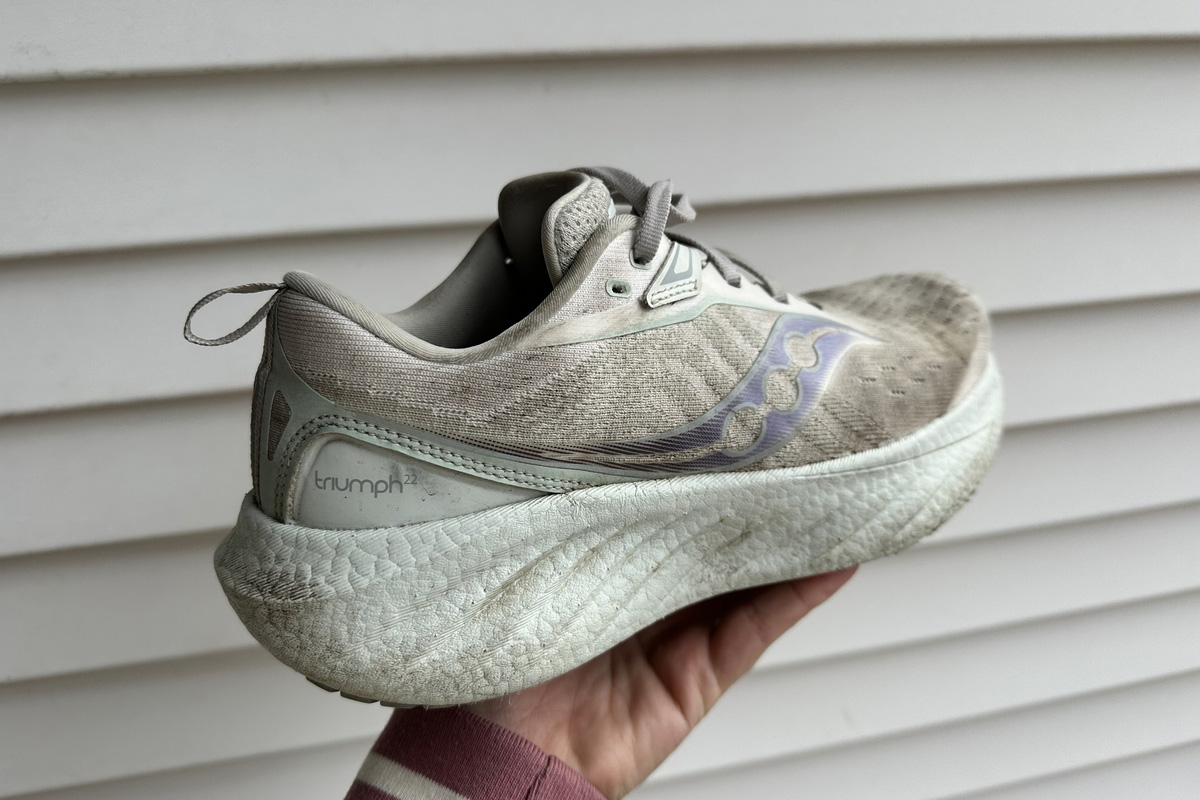
| Shoe | Price | Weight | Stack Height | Drop | Cushion |
|---|---|---|---|---|---|
| Saucony Triumph 22 | $160 | 1 lb. 1.6 oz. | 37mm heel / 27mm forefoot | 10mm | Maximum |
| Saucony Endorphin Speed 4 | $170 | 14.4 oz. | 36mm heel / 28mm forefoot | 8mm | Maximum |
| Hoka Bondi 9 | $170 | 1 lb. 2.6 oz. | 40.5mm heel / 35.5mm forefoot | 5mm | Maximum |
| Brooks Glycerin 22 | $165 | 1 lb. 2.2 oz. | 38mm heel / 28mm forefoot | 10mm | Maximum |
Overall, the Triumph 22 is an excellent road running shoe for anyone looking for a comfortable, stable option with a lot of padding and terrific energy return. As a result, it's been my go-to for the past season, but there are several other close competitors in the max-cushioned category. First up is another springy Saucony option: their Endorphin Speed 4. This shoe is remarkably light, weighing just 14.4 ounces for the pair, and features the same PWRRUB PB midsole but features a streamlined upper that's less durable than the Triumph's.
We also like Hoka's Bondi 9, which is popular among the maximalist crowd with an even taller platform underfoot (40.5mm at the heel and 35.5mm at the forefoot) and a lower drop (5mm). In testing, I found the Hoka to be slightly more laggy than the Triumph, but the two have very similar personalities. Finally, the space-age-looking Brooks Glycerin is a nice alternative for speed-focused runners. The Glycerin's nitrogen-infused midsole offers a similarly springy feel as the Triumph, though I found the shoe decidedly less stable for turning quickly and navigating uneven surfaces.
Back to Our Saucony Triumph 22 Review See Our Running Shoes Guide